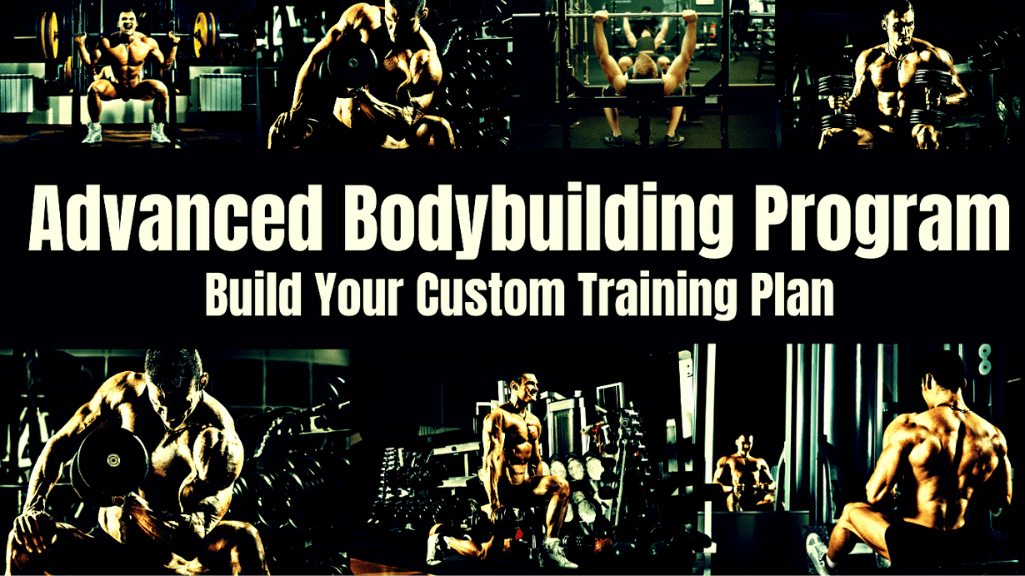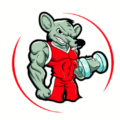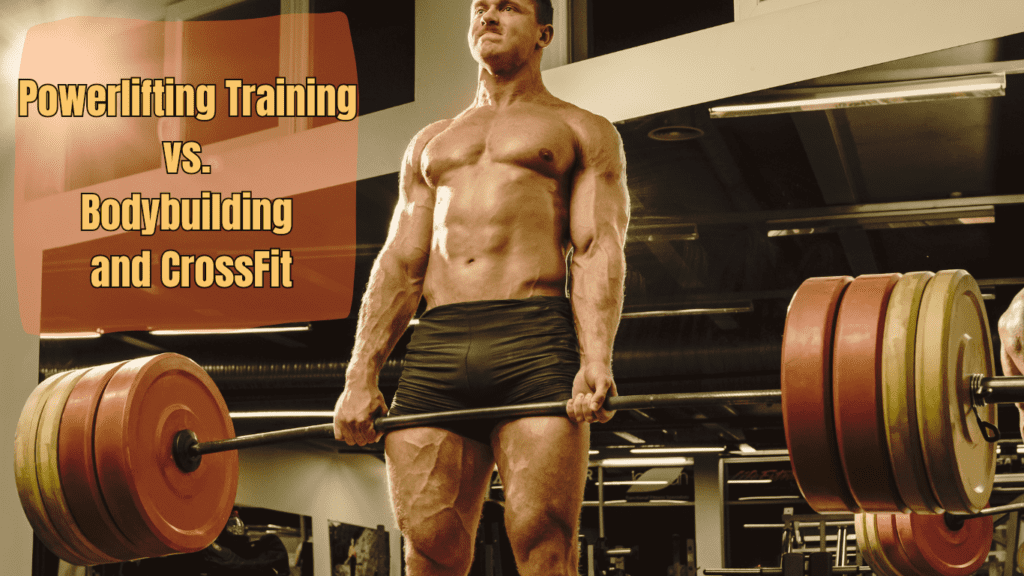Mastering Personalization in Your Advanced Bodybuilding Program
In this article, we will guide you through the process of designing your own advanced bodybuilding program, providing the essential principles and strategies for long-term success.
Embarking on an advanced bodybuilding program is no small feat. For those who have already mastered the basics, this guide provides the insights and principles necessary to create a customized plan that aligns perfectly with your goals, recovery capacity, and lifestyle. By the end, you’ll have a clear understanding of how to tailor every aspect of your training and nutrition to achieve maximum results.

Purpose of the Guide
The goal of this article is straightforward: to empower advanced bodybuilders with the tools to craft a personalized program that works specifically for them. A cookie-cutter plan might work for beginners, but once you reach an advanced level, your body’s needs and responses become far more specific. You’ll learn how to move away from generic routines and towards a plan designed to maximize your strengths, address your weaknesses, and support sustainable growth.
An advanced bodybuilding program requires you to think critically about how every detail—from exercise selection to nutrition timing—affects your progress. This guide will show you how to use that knowledge to design a regimen that evolves with you, rather than one that stalls your gains.
Subscribe And Get Our Free E-Book:Unlocking The Power Of Nutrition-Supplements, Substitutes, and Superfoods!
Why Personalization Matters
One of the most critical aspects of an advanced bodybuilding program is personalization. At this stage, progress slows because the “one-size-fits-all” approach no longer meets the demands of your body. Here’s why customization is essential:
- Individual Goals: Are you aiming for muscle hypertrophy, strength gains, or both? Your focus will determine your training split, volume, and intensity.
- Metabolism: Everyone’s metabolism responds differently to diet and training. Some thrive on higher carbs, while others perform better with a moderate or low-carb approach.
- Recovery Capacity: Advanced training often pushes your body to its limits. Recovery isn’t just about rest—it’s also about understanding how much volume your body can handle without overtraining.
By addressing these factors, you’ll not only avoid plateaus but also create a plan that supports continuous improvement.
Key Factors in Personalizing an Advanced Bodybuilding Program
| Factor | Why It Matters | How to Optimize |
|---|---|---|
| Training Split | Different muscle groups recover at different rates. A well-structured split prevents overtraining. | Experiment with push/pull/legs, upper/lower, or body part-specific splits based on recovery. |
| Training Volume & Intensity | Too much volume can lead to overtraining, while too little won’t stimulate growth. | Adjust sets, reps, and intensity techniques (drop sets, rest-pause) based on progress tracking. |
| Metabolism & Nutrition | Advanced lifters have different metabolic rates and nutrient needs. | Track response to carb cycling, high-protein intake, and pre-/post-workout nutrition. |
| Recovery & Sleep | Muscle growth happens during recovery, not just in the gym. | Ensure 7–9 hours of sleep, incorporate active recovery days, and monitor heart rate variability. |
| Injury Prevention & Mobility | Advanced lifters have a higher risk of joint strain and overuse injuries. | Prioritize warm-ups, mobility work, and periodization strategies to prevent overuse. |
| Progress Tracking & Adjustments | Small tweaks make a big difference at the advanced level. | Use training logs, strength assessments, and body composition tracking to refine your plan. |
Who This Is For
This guide is designed for advanced bodybuilders who already have a solid foundation in training and nutrition. If you’re someone who:
- Has years of experience in strength training and muscle building.
- Understands the basics of progressive overload, macronutrient tracking, and recovery.
- Wants to refine their approach to maximize results, rather than rely on generic programs.
Then this is the right place for you. Whether you’re preparing for a competition, seeking to break through a plateau, or simply aiming to reach your peak potential, the principles outlined here will help you take your training to the next level.
The Big Picture
Crafting an advanced bodybuilding program is about understanding that there’s no magic formula—only what works best for you. Your body’s feedback is the ultimate guide, and learning how to interpret that feedback is a skill every advanced bodybuilder should develop.
In the following sections, we’ll dive deeper into the methods and strategies for designing your program, covering everything from advanced training techniques to meal planning and supplementation. Remember, the key to success lies in consistent effort, self-awareness, and a willingness to adapt. Let’s get started!
Beginner, Intermediate and Advanced Hypertrophy Training Difference Video
Defining “Advanced” in an Advanced Bodybuilding Program
When discussing an advanced bodybuilding program, it’s important to first understand what qualifies someone as “advanced.” This term goes beyond simply lifting heavier weights or following a rigid workout schedule. Being advanced encompasses a combination of experience, physical development, and psychological readiness. Here, we’ll break down the key aspects that define an advanced bodybuilder.

Experience Level
At its core, being advanced means you’ve moved well beyond the beginner and intermediate stages of bodybuilding. This usually involves:
- Years of Consistent Training: Advanced bodybuilders have typically trained with dedication for at least 3–5 years or more. They’ve stuck with a program, learned how their body responds to different training styles, and have consistently applied progressive overload.
- Plateau in Progress: One of the defining signs of being advanced is hitting plateaus that can’t be broken by simple adjustments. This happens because your body has adapted to training, requiring more complex strategies to continue making gains.
- Mastery of Form and Technique: Advanced lifters are not only strong but also skilled. They understand the importance of proper form to maximize muscle activation while minimizing the risk of injury. Whether it’s executing a squat, bench press, or pull-up, advanced bodybuilders know how to get the most out of every movement.
Physical Characteristics
An advanced bodybuilding program caters to individuals who have developed noticeable muscle maturity and symmetry, often nearing their genetic potential.
- Muscle Maturity: This refers to the density and fullness of muscles that come with years of consistent training. Unlike beginners, advanced bodybuilders display more defined, hard muscle, even at rest.
- Symmetry and Proportions: Advanced athletes understand that bodybuilding isn’t just about size—it’s about achieving balance. They’ve worked to ensure their physique is symmetrical, with no body part overpowering another.
- Approaching Genetic Potential: Advanced bodybuilders often find themselves nearing their maximum natural potential. While growth is still possible, it happens at a slower rate, requiring more precision in training, nutrition, and recovery.
Psychological Readiness
What separates an advanced bodybuilder isn’t just physical—it’s also their mindset. Following an advanced bodybuilding program requires discipline, patience, and a willingness to pay close attention to details.
- Commitment to Self-Discipline: Advanced bodybuilding demands a high level of commitment. This includes sticking to a structured training and nutrition plan, even when motivation wanes.
- Understanding One’s Body: Advanced athletes develop a keen sense of how their body reacts to training, nutrition, and recovery. They can identify when adjustments are needed and make them with confidence.
- Tracking and Tweaking Variables: Progress at this level relies on consistently tracking metrics like training volume, macronutrient intake, and recovery quality. Advanced bodybuilders know how to fine-tune these variables to optimize performance and results.
The Big Picture
Defining “advanced” is essential for anyone considering an advanced bodybuilding program. It’s about more than just time spent in the gym—it’s about the experience, physical development, and mental approach that set you apart from beginners and intermediates.
If you recognize yourself in these descriptions, you’re ready to embrace the strategies and principles that will push your progress to the next level.
Key Principles for Building an Advanced Bodybuilding Program
Creating an effective advanced bodybuilding program requires a deep understanding of your goals, body, and training methods. At this level, progress hinges on fine-tuning every detail to align with your needs. Here’s a breakdown of the core principles to help you build a program that delivers results.

Goal-Setting
A well-designed program starts with clear and specific goals. Without knowing what you want to achieve, it’s impossible to structure your training effectively.
- Hypertrophy, Strength, or Cutting: Determine whether your focus is on building muscle size, increasing strength, or improving muscle definition. Your primary goal will shape the intensity, volume, and rest periods in your program. For example, hypertrophy emphasizes moderate weights and higher reps, while strength prioritizes heavier weights with lower reps.
- Periodization: To sustain progress, incorporate periodization—cycling through different training phases such as hypertrophy, strength, and deload periods. This approach prevents overtraining and promotes consistent improvement.
- Outcome-Based Planning: Define specific, measurable goals. Instead of aiming to “get bigger,” set a target like “gain 5 pounds of lean muscle in 12 weeks.” Concrete objectives provide focus and accountability.
Understanding Your Body
Personalization is the cornerstone of any advanced bodybuilding program, and that starts with knowing how your body responds to different stimuli.
- Metabolism: Your metabolic rate plays a key role in energy requirements and recovery. Fast metabolisms may require higher calorie intake to fuel intense training, while slower metabolisms need careful macronutrient management to avoid excess fat gain.
- Recovery Capacity: Every individual’s recovery ability varies based on genetics, lifestyle, and training history. Adequate sleep, proper nutrition, and active recovery are critical for maintaining performance. Listen to your body to avoid overtraining and adjust volume or intensity as needed.
- Weak Point Training: Address lagging muscle groups by dedicating extra attention to them in your program. For example, if your hamstrings are underdeveloped compared to your quads, prioritize exercises like Romanian deadlifts or leg curls.
Training Volume and Frequency
Managing training volume and frequency effectively is essential for maximizing results without risking burnout.
- Total Weekly Volume: Calculate the total sets and reps you perform for each muscle group per week. For hypertrophy, 10–20 sets per muscle group is a common range. Advanced lifters often benefit from tailoring this based on individual recovery capacity and goals.
- Split Selection: Choose a training split that matches your goals and recovery ability. Options include:
- Push-Pull-Legs: Great for balanced development.
- Upper/Lower: Ideal for strength-focused programs.
- Body-Part Splits: Allows for targeted focus on individual muscles.
- Rest Periods: Adjust rest based on the intensity of your workout. For hypertrophy, 60–90 seconds between sets works well, while strength training may require 2–5 minutes.
Intensity Techniques
Advanced bodybuilders often incorporate intensity techniques to push past plateaus and maximize muscle activation.
- Drop Sets: Perform a set to failure, then immediately reduce the weight and continue for more reps.
- Supersets: Pair two exercises targeting opposing or similar muscle groups (e.g., biceps and triceps) with minimal rest.
- Cluster Sets: Break a heavy set into smaller “clusters” with short rests in between.
- Rest-Pause: Pause for 10–15 seconds after reaching failure, then continue for a few additional reps.
- Forced Reps: With a partner’s help, complete additional reps after reaching failure.
Incorporate these techniques sparingly to avoid overtraining. They’re most effective when used strategically, such as during a final set or a high-priority workout.
New Chart: Advanced Bodybuilding Program Optimization
| Key Factor | Importance | How to Optimize |
|---|---|---|
| Training Periodization | Prevents stagnation and overtraining. | Cycle through hypertrophy, strength, and deload phases every few weeks. |
| Exercise Selection | Ensures balanced development. | Rotate exercises to target muscles from different angles. |
| Time Under Tension (TUT) | Increases muscle fiber activation. | Slow down eccentric phases and control movement speed. |
| Progressive Overload | Essential for continuous muscle growth. | Increase weight, reps, or training volume weekly. |
| Recovery Strategies | Maximizes adaptation and prevents injury. | Incorporate mobility work, active recovery, and adequate sleep. |
| Nutrient Timing | Enhances muscle repair and performance. | Optimize pre- and post-workout meals with protein and carbs. |
Progressive Overload
The principle of progressive overload is fundamental to any advanced bodybuilding program. At this stage, progress requires more creativity than simply adding weight to the bar.
- Methods Beyond Weight: Explore other ways to challenge your muscles, such as:
- Increasing Time Under Tension: Slow down the eccentric (lowering) phase of a lift.
- Improving Form: Refine your technique to enhance muscle engagement.
- Manipulating Rest Intervals: Gradually reduce rest times to increase workout density.
- Tracking Progress: Maintain a detailed training log to monitor your lifts, sets, and reps. Tracking ensures you stay accountable and provides insight into what’s working or needs adjustment.
Bringing It All Together
The foundation of a successful advanced bodybuilding program lies in aligning these principles with your specific needs and goals. By setting clear objectives, understanding your body’s responses, and applying advanced training techniques, you’ll be well on your way to sustained progress.
In the next section, we’ll discuss how to optimize your nutrition and supplementation to complement your training plan. This integration is essential for achieving peak performance and maximizing your results.
Structuring Your Training Program in an Advanced Bodybuilding Program
Building an advanced bodybuilding program requires a strategic approach that accounts for the long-term, medium-term, and weekly structure of your training. Proper organization not only ensures consistent progress but also helps prevent overtraining and injury. Here’s a guide to structuring your program effectively.

Macrocycle (Long-Term Plan)
The macrocycle is your overarching training plan, spanning 6–12 months. It provides a roadmap for achieving your ultimate goals, whether they involve competing, reaching a new personal best, or achieving a specific aesthetic.
- Plan for Major Milestones: Align your macrocycle with important dates, such as competition prep, a specific event, or a personal deadline. Having a clear endpoint helps you maintain focus.
- Periods of High Intensity and Deload Weeks: Alternate between phases of intense training and recovery periods. For example, schedule 3–6 weeks of high-volume training followed by a 1-week deload to allow your body to recover and adapt.
A well-planned macrocycle ensures that you have enough time to focus on different aspects of training, such as hypertrophy, strength, or cutting, while keeping overall progress on track.
Mesocycle (4–6 Week Phases)
The mesocycle represents medium-term goals and typically lasts 4–6 weeks. Each mesocycle should focus on a specific objective, such as muscle growth, strength, or fat loss.
- Specific Goal Focus: For hypertrophy, prioritize moderate weights and higher reps with controlled rest periods. For strength, incorporate heavier weights, lower reps, and longer rest intervals.
- Variability to Prevent Adaptation: Keep your body challenged by introducing new exercises, altering rep ranges, or adjusting tempo within each mesocycle. This variability prevents your body from adapting too quickly, which can lead to plateaus.
By breaking your macrocycle into mesocycles, you can maintain motivation and consistency while progressively addressing different aspects of your fitness journey.
Microcycle (Weekly Training)
The microcycle is the most granular level of planning, typically encompassing one week of training. At this level, you determine your weekly workout structure, balancing intensity, volume, and recovery.
- Weekly Workout Structure: Decide how many days you’ll train and which muscle groups or movements you’ll prioritize each day. For example:
- Push-Pull-Legs for balanced development.
- Upper/Lower Split for strength-focused phases.
- Body-Part Splits to emphasize specific muscles.
- Adjust Volume and Intensity: Tailor your weekly plan to align with your recovery capacity. For instance, if your recovery is slower due to high training intensity, reduce total weekly volume or include an additional rest day.
- Sufficient Rest Days: Recovery is vital for advanced bodybuilders. Plan at least 1–2 rest or active recovery days each week to ensure your muscles have adequate time to repair and grow.
The Big Picture
Structuring an advanced bodybuilding program requires careful attention to macro, meso, and microcycles. The key is to balance periods of intense effort with proper recovery, while continuously adapting your plan to fit your evolving goals and physical responses.
By planning thoughtfully at every level, you’ll ensure that each workout serves a purpose, leading to consistent progress over the long term.
Nutrition and Recovery in an Advanced Bodybuilding Program
Optimizing nutrition and recovery is just as crucial as structuring your workouts in an advanced bodybuilding program. At this level, fine-tuning your diet and focusing on recovery strategies can significantly enhance your results, ensuring that your body is primed for performance and repair. Let’s break down these key areas.

Diet Alignment
Your diet serves as the foundation for achieving your goals, whether you’re aiming to build muscle, lose fat, or improve performance.
- Caloric Needs: Start by calculating your maintenance calories—the number of calories you need to maintain your current weight. From there, adjust based on your goals:
- Bulking: Add 10–15% more calories to support muscle growth.
- Cutting: Reduce calories by 10–20% to promote fat loss while preserving muscle mass.
Accurate calorie tracking ensures you’re providing your body with the energy it needs without overdoing it.
- Macronutrient Ratios: For advanced bodybuilders, macronutrient balance is critical:
- Protein: Aim for 1.2–2.2 grams per kilogram of body weight to support muscle repair and growth.
- Carbohydrates: Adjust carbs based on your energy needs, with higher intake during intense training phases.
- Fats: Keep fat intake at around 20–30% of total calories for hormonal health and energy.
- Meal Timing: Timing your meals can optimize performance and recovery. For example:
- Pre-Workout: Include a balanced meal of protein and carbohydrates 1–2 hours before training.
- Post-Workout: Consume a fast-digesting protein (like whey) and carbs to kickstart recovery.
- Evenly Spaced Meals: Distribute protein throughout the day to maintain muscle protein synthesis.
Supplementation
Supplements can complement your diet, but they should not replace whole foods. Here are some effective options for advanced bodybuilders:
- Whey Protein: A convenient source of high-quality protein, particularly useful post-workout.
- Creatine Monohydrate: Proven to enhance strength, muscle size, and recovery.
- Branched-Chain Amino Acids (BCAAs): Can support muscle recovery during prolonged or intense workouts.
- Omega-3 Fatty Acids: Help reduce inflammation and support overall health.
While supplements can be helpful, avoid over-reliance. A well-rounded diet should always come first in any advanced bodybuilding program.
Recovery and Regeneration
Recovery is where the real growth happens. Without adequate recovery, even the best training and nutrition plan will fall short.
- Active Recovery and Mobility Work: Include low-intensity activities such as walking, yoga, or stretching to promote blood flow and prevent stiffness. Incorporating mobility exercises can also improve joint health and prevent injuries.
- Deload Weeks: Periodically reduce training intensity and volume to allow your body to recover and rebuild. Deloads are particularly important for advanced bodybuilders who train at high intensities.
- Advanced Recovery Tools: Consider incorporating tools and techniques to enhance recovery, such as:
- Massage Guns: Help reduce muscle tension and improve blood flow.
- Ice Baths: Aid in reducing inflammation and speeding up recovery after intense sessions.
- Sauna Use: Promotes relaxation, detoxification, and improved circulation.
Putting It All Together
Balancing nutrition and recovery is essential for maximizing results in an advanced bodybuilding program. By aligning your diet with your goals, leveraging supplements wisely, and prioritizing recovery, you set the stage for long-term success.
Monitoring and Adjusting in an Advanced Bodybuilding Program
Consistent progress in an advanced bodybuilding program depends on your ability to monitor your efforts and make informed adjustments. At this stage, detailed tracking and adaptability are crucial for overcoming plateaus and fine-tuning your plan to fit your evolving goals. Here’s how to effectively track your progress and make necessary changes.

Tracking Progress
Tracking your performance and physical changes ensures that your efforts align with your goals. Without data, it’s impossible to know whether your program is truly working.
- Log Training Volume and Intensity: Keep a detailed record of your workouts, including exercises, sets, reps, and weights used. This log allows you to monitor progression and ensures you’re consistently applying progressive overload. Additionally, note the intensity of your sessions, whether through perceived exertion or by tracking rest intervals.
- Monitor Body Composition: Use a combination of methods to track changes in your physique:
- Photos: Take regular progress photos from multiple angles under consistent lighting.
- Measurements: Measure key areas such as arms, chest, waist, and thighs to assess muscle growth and fat loss.
- Weight Tracking: Monitor your body weight, but interpret it alongside other metrics to account for fluctuations due to water retention, glycogen levels, or other factors.
- Assess Recovery: Pay attention to how your body feels between workouts. Tracking sleep quality, energy levels, and overall fatigue can provide insight into whether your recovery strategies are effective.
Making Adjustments
Even the most well-designed advanced bodybuilding program may need tweaks over time. Adjusting your approach based on feedback and results is a normal and essential part of long-term success.
- Identify Plateaus: Plateaus are a common challenge in advanced training. Here’s how to spot and address them:
- Training Plateaus: If your lifts have stalled or you’re not seeing strength improvements, reassess your volume, intensity, or exercise selection. Consider incorporating new techniques like cluster sets or rest-pause training.
- Body Composition Plateaus: If progress in muscle gain or fat loss has slowed, evaluate your caloric intake and macronutrient ratios. Adjusting your diet, such as adding calories during a bulking phase or reducing them during cutting, can reignite progress.
- Utilize Feedback: Sometimes, an outside perspective can make a difference.
- Coaches: A coach can provide expert guidance, analyze your form, and recommend program adjustments based on your performance.
- Training Partners: Workout partners can offer feedback on your effort, intensity, and consistency, helping you identify areas for improvement.
- Stay Flexible: Adaptability is a hallmark of success in advanced bodybuilding. For example, if you’re experiencing joint pain or excessive fatigue, don’t hesitate to adjust your program by reducing volume or intensity temporarily. Similarly, if your lifestyle changes, such as work demands or travel, modify your schedule to maintain consistency without compromising recovery.
Bringing It All Together
Monitoring and adjusting your plan is a dynamic process that ensures continuous improvement in an advanced bodybuilding program. By meticulously tracking your progress, identifying areas of stagnation, and making strategic changes, you’ll be equipped to overcome obstacles and sustain long-term success.
Practical Tips for Advanced Bodybuilding Program
An advanced bodybuilding program requires more than just following a generic plan. As you progress to higher levels of training, individualization and thoughtful adjustments become essential. Here are some practical tips to ensure that your program not only challenges you but also supports your long-term success.

Listen to Your Body
One of the most important aspects of an advanced bodybuilding program is understanding how your body responds to stress and recovery. Training at an advanced level often means pushing the limits, but overtraining can lead to injuries or stagnation.
- Adjust Based on Fatigue and Readiness: Don’t push through every session with the same intensity if your body isn’t fully recovered. Monitor how you feel throughout the week—if you’re feeling unusually fatigued or mentally drained, it may be a sign to reduce intensity or modify the workout.
- Listen to Feedback: Sometimes, subtle signals like joint discomfort or changes in sleep quality can indicate the need for adjustments. Keeping a journal can help track these signals and provide insight into when changes should be made.
Experimentation
An advanced bodybuilding program doesn’t mean sticking rigidly to the same exercises or methods. In fact, experimentation can often lead to breakthroughs in your training. By introducing variety, you challenge your body in new ways, which can result in improved performance and muscle growth.
- Try New Exercises or Techniques: Incorporating variations, such as different rep ranges, tempos, or unilateral movements, keeps your muscles engaged and prevents adaptation. For example, replacing barbell bench presses with dumbbell bench presses can target muscles differently and improve symmetry.
- Cycle Techniques: Utilize techniques like drop sets, supersets, or high-intensity interval training during specific phases of your program. This allows you to gauge what works best for you and avoid stagnation.
Consistency is key, but allowing yourself room for experimentation ensures that your advanced bodybuilding program evolves in line with your progress.
Advanced Bodybuilding Program: Consistency and Patience
No matter how advanced your program becomes, consistent effort and patience are crucial for long-term success. Staying the course is important, but there should always be room for flexibility.
- Sticking to the Plan: Following your program with discipline will yield results over time. Whether you’re focusing on hypertrophy, strength, or cutting, maintaining consistency in your training volume, intensity, and recovery is essential.
- Adaptability When Necessary: While consistency is important, being adaptable when necessary is equally valuable. Life happens, and sometimes your schedule or recovery demands change. Recognizing when to tweak your plan without derailing your progress is a key skill.
An advanced bodybuilding program should challenge you while also allowing for adjustments based on real-time needs. Staying consistent, yet flexible, ensures you maximize your progress over time.
Common Pitfalls to Avoid in an Advanced Bodybuilding Program
As you progress with your advanced bodybuilding program, it’s important to be aware of potential pitfalls that can hinder your progress. While the journey to building a stronger, more defined physique can be exciting, there are common mistakes that many advanced bodybuilders encounter. Being mindful of these can help you stay on track and continue achieving optimal results.

Overtraining: Recognizing the Signs and Importance of Recovery
Overtraining is one of the most significant pitfalls for those engaged in an advanced bodybuilding program. The relentless pursuit of progress can sometimes lead to pushing your body beyond its limits, which may result in injuries, plateaus, and decreased performance.
- Recognizing the Signs: Fatigue, lack of motivation, sleep disturbances, and frequent soreness are all signs that you may be overtraining. Ignoring these signals can lead to long-term setbacks.
- Importance of Recovery: Recovery is just as important as training itself. Without proper rest, your muscles won’t have time to repair and grow. Ensuring adequate sleep, proper nutrition, and deload periods will prevent burnout and sustain long-term progress.
Incorporating balanced rest days and deload weeks ensures that your advanced bodybuilding program stays effective and safe.
Advanced Bodybuilding Program: Neglecting Weak Areas
A common mistake in advanced bodybuilding is focusing solely on strengths while neglecting weaker areas. While achieving symmetry and aesthetics is important, ignoring imbalances can lead to injuries and hinder overall progress.
- Addressing Imbalances: It’s easy to get caught up in what you’re good at—whether that’s chest presses or bicep curls. However, targeting weak muscle groups through specific exercises and programming is crucial for overall development.
- Customization: Adjusting your advanced bodybuilding program to include more accessory work for lagging areas, such as unilateral movements or isolation exercises, helps build a balanced and well-rounded physique.
Focusing on weak areas is essential for maintaining injury-free progress and achieving a complete transformation.
Advanced Bodybuilding Program: Chasing Trends
The fitness industry is filled with trends that come and go, promising quick fixes and instant results. However, when it comes to an advanced bodybuilding program, sticking to proven, evidence-based methods is far more effective than hopping on the latest fad.
- Avoiding Fads: Trends like extreme diets, short-lived supplement solutions, or untested workout routines may offer temporary gains but rarely produce lasting results.
- Long-Term Strategies: Building a sustainable program through a combination of strength training, progressive overload, and proper nutrition ensures consistent and measurable progress.
- Staying Informed: Continuously educating yourself and adapting based on proven techniques rather than chasing fleeting fads will yield more substantial results.
An advanced bodybuilding program thrives on consistency and scientifically-backed approaches rather than the latest trend.
Recognizing and avoiding these common pitfalls will help you stay focused and successful in your journey towards building a stronger, more defined physique through your advanced bodybuilding program.
Mastering Your Advanced Bodybuilding Program
By now, you’ve explored various aspects of designing and optimizing your advanced bodybuilding program. From understanding the principles of goal-setting, periodization, and progressive overload to recognizing common pitfalls and making necessary adjustments, you’ve gained a comprehensive framework to help you achieve sustained results. Below are the key points that highlight the importance of tailoring your program and maintaining consistency to reach your peak performance.
Key Points of an Advanced Bodybuilding Program
Here’s why each aspect of this guide plays a crucial role:
- Personalization: Tailoring your program to suit individual goals, recovery capacity, and metabolism ensures that every aspect of your training aligns with your needs. Without personalization, progress can plateau.
- Monitoring Progress: Consistent tracking of your workouts, body composition, and recovery allows you to stay accountable and make informed adjustments to avoid stagnation.
- Experimentation: Incorporating variety through new exercises, intensity techniques, and periodization prevents adaptation and keeps your muscles progressing.
- Consistency and Patience: Building long-term progress requires sticking to a plan while staying flexible to prevent burnout and injury.
- Avoiding Pitfalls: Recognizing and addressing overtraining, weak areas, and fad techniques ensures that your program is both sustainable and effective.
Encouraging readers to take control of their training through these principles will help them refine their approach over time. With this foundation, revisiting this guide periodically will allow for continued improvement.
Advanced Bodybuilding Program: Take Control of Your Training
The journey towards becoming an advanced bodybuilder is unique for everyone. By integrating these strategies into your advanced bodybuilding program, you’ll be better equipped to push through plateaus and reach new heights. Tracking progress and making adjustments will ensure that you stay on the right path.
Advanced Bodybuilding Program: Frequently Asked Questions (FAQ)
- What makes someone an advanced bodybuilder?
An advanced bodybuilder has likely been training consistently for several years, demonstrates mastery of form and technique, and has reached a plateau in progress. They often focus on fine-tuning their program for specific goals like hypertrophy, strength, or cutting. - How do I track progress effectively?
Track progress by logging training volume, intensity, and performance. Additionally, use methods such as photos, measurements, and weight tracking to monitor body composition changes over time. - What should I do if I hit a plateau?
If you encounter a plateau, assess your training volume, intensity, and recovery strategies. Incorporating new techniques like supersets or adjusting macronutrient intake can help reignite progress. - Is consistency really more important than intensity?
Yes, maintaining consistency in your training over time leads to greater results. While intensity plays a role, consistent effort aligned with progressive overload will yield long-term gains. - How often should I adjust my advanced bodybuilding program?
Regular adjustments should be made every 4-6 weeks to account for progress and plateaus. Deload weeks and varying intensity periodically will prevent burnout and stagnation. - Can I include supplements in my advanced program?
While supplements like whey protein, creatine, and BCAAs can aid performance, they should not replace a balanced diet. Focus on whole foods and use supplements strategically to complement your nutrition. - How important is recovery in an advanced program?
Recovery is equally important as training. Adequate rest, sleep, mobility work, and active recovery tools like massage guns and ice baths are essential for optimal progress and injury prevention. - Should I follow the latest fitness trends?
It’s best to avoid short-lived trends and focus on scientifically-backed methods that have proven results. Sustainable progress comes from well-structured, personalized programming rather than chasing fads. - How do I balance hypertrophy and strength in one program?
A balanced approach includes training cycles that emphasize both hypertrophy and strength. Periodization, adjusting volume, and intensity, as well as focusing on weak areas, allows for a holistic development. - What is the best split for advanced training?
Split selection depends on your recovery ability and goals. Popular splits include push-pull-legs, upper/lower, or body-part splits, with adjustments made to avoid overtraining and maximize recovery.
By applying these principles and addressing key areas of your advanced bodybuilding program, you’ll be well on your way to achieving sustained progress and greater performance.


